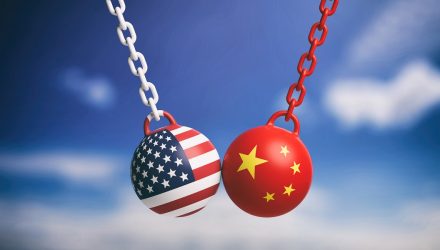There is little doubt that the recent US-China trade tensions have adversely affected both consumers and producers in the two countries. The tariffs have reduced trade between the US and China, but the bilateral trade deficit remains broadly unaffected. Although the impact on global growth is relatively moderate at this time, the latest escalation could significantly damage business and financial market sentiment, upend global supply chains, and jeopardize the projected recovery in global growth in 2019.
Adding to the prevailing economic uncertainty, Washington has also forbidden U.S. firms from doing business with Chinese giant Huawei, citing national security concerns. On May 23, the U.S. Commerce Department said that it was proposing a new rule to implement anti-subsidy levies on products from countries that undervalue their currencies against the U.S. dollar, another move that could threaten Chinese trade.
With consumer concerned that the trade war could be prolonged, many investors are seeking a way to assuage some of the trade tension using investment strategies. Goldman Sachs has released 5 ETF strategies that investors can utilize to mitigate trade pressure:
Target Dividend Growth Stocks
In times of heightened volatility and economic uncertain, investing in dividends can offer some financial reprieve. ETFs like the Proshares S&P 500 Dividend Aristocrats ETF (NOBL) and SPDR S&P Dividend ETF (SDY), are dividend paying ETFs that can act as a hedge for portfolios.
Focus On Businesses With Reduced Labor Costs
Companies with low labor costs should be better positioned than those with exhorbitant expenses. These companies include tech mainstays like Facebook (FB)> and Google parent Alphabet (GOOGL). Services companies are generally less susceptible to tariffs compared with goods companies, so looking at serviced-based ETFs like the Communication Services Select Sector SPDR Fund (XLC), Fidelity MSCI Communication Services Index ETF (FCOM), and Vanguard Communication Services ETF (VOX)/strong> should serve investors on this regard.
Telecom & Utilities ETFs Are Often Immune To Trade Risks
Several companies are not exposed to duties at all including utility and telecom companies, according to David Kostin, Goldman Sachs chief U.S. equity strategist. Moreover, a dovish Fed and volatile equity market will likely keep the benchmark U.S. treasury yield at low levels. Rate sensitive telecom and utilities sectors should perk up, making the Utilities Select Sector SPDR Fund (XLU), which yields 3.04% annually, a good bet.
Consider High-Yield Investments
High-yield products go a long way toward safeguarding an investor’s portfolio against any capital loss. Global X SuperDividend Alternatives ETF (ALTY), which yields 7.04% annually, can be tapped for gains.
Utilize Small-Cap ETFs
Per Goldman, “70% of the revenues of U.S. companies are domestic, so while tariff is an issue, it’s concentrated in some industries and some sectors than others.” Since small-cap stocks and ETFs are subjected to the domestic economy, one can target small-cap ETFs like Invesco S&P SmallCap Consumer Staples ETF (PSCC) , IQ US Real Estate Small Cap ETF (ROOF) (yields 6.38% annually), ProShares Russell 2000 Dividend Growers ETF (SMDV), and Invesco S&P SmallCap Utilities ETF (PSCU).
For more investing ideas, visit ETFtrends.com.







